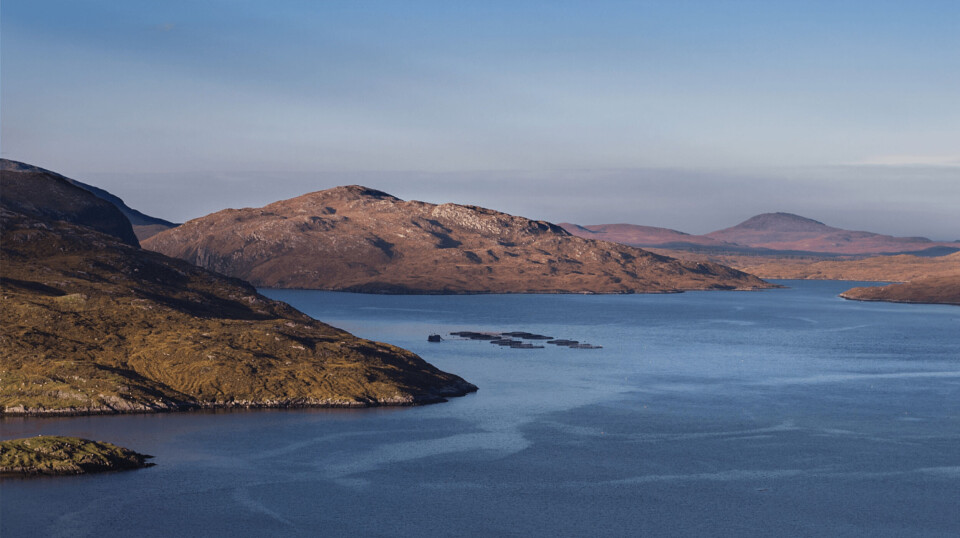
Kontali lowers short-term expectations for Scottish salmon sector
November mortality figures and lower exports prompt analyst to adjust prediction
Seafood analysis and insights provider Kontali has revised its forecast for Scottish salmon harvests downwards in the wake of higher than envisaged mortality in the sector during November.
“In addition, confirmed feed consumption in Q3 2023 has been revised somewhat down this week,” Kontali said in its weekly newsletter to subscribers. “This corresponds to [the] trend seen in export statistics - low sales in October 2023. Base case harvest scenario is therefore revised and adjusted down further for both 2024 and 2025 – including assumption of higher losses and lower average harvest weight (smolt yield).”
Kontali’s statistics are used by salmon farming companies and banks involved in the aquaculture industry. Figures on its EDGE subscription service show that the information provider expects the Scottish salmon sector to harvest 166,900 tonnes (whole fish equivalent) this year.
This is a modest 5% increase over the 159,100 tonnes WFE harvested in 2023, and 160,600 tonnes harvested in 2022, both of which were challenging years for salmon farmers in Scotland. Most of the extra volume is expected to be harvested in September, October, and November, with increases of 15%, 27%, and 14% respectively compared to the same months last year.
High investment
Lars Daniel Garshol, Kontali’s lead analyst for the salmonid sector, said Scottish productivity will take time to recover.
“Medium to long term we envisage a high investment cycle to result in a production recovery and growth for the Scottish industry, taking into account major upgrades of the ‘technology-platform’ (site structure, large smolt, cage technology, bloom detection system, etc.),” Garshol told Fish Farming Expert.
“This will take time to develop – both permits, planning and construction, before actual production and output. From a financial point of view – post salmon tax in Norway – using Scotland’s idle licence capacity is very attractive.”
Monthly mortality
Publicly available figures from trade body Salmon Scotland show that the monthly mortality rate for the Scottish salmon industry in November was 4.02%, better than October, when the rate was 4.82%, and also lower than November 2022 (4.64%).
But the percentage of monthly mortality in November was still the second highest in 2023, and history shows that if a farm is facing high mortality one month, then there is often a knock-on effect the following month because surviving fish are weakened.
Unlike earlier in the year, when Scottish Sea Farms and Bakkafrost Scotland bore the brunt of biological challenges, Mowi Scotland was hardest hit in November.
The company revealed in a trading update today that Mowi Scotland made a rare operating loss of €0.10 per kilo on its fish in Q4 2023. Previously, in its report for the third quarter of 2023, Mowi had warned that micro jellyfish and higher plankton biomass were evident in warm seawater conditions compounded by El Niño, leading to incident-based mortality costs of €7.6 million.
High biological cost
“The above-mentioned issues have lingered on in October, and at the time of writing, we expect high biological cost in the fourth quarter,” wrote Mowi, which reduced its anticipated harvest volume for 2023 by 3%, from 64,000 to 62,000 gutted weight tonnes.
Much of the mortality occurred in one water body, Loch Seaforth, Lewis. Mowi recorded monthly mortality of 45%, 30.5% and 16.6% respectively at its Trilleachan Mor, Seaforth and Noster sites. Seaforth and Noster are run as one site and have a combined maximum allowed biomass (MAB) of 4,330 tonnes, while Trilleachan Mor, which is close by, has an MAB of 2,130 tonnes.
Mowi also recorded monthly mortality of 38.4% at Loch Alsh, which has an MAB of 2,500 tonnes, and had reported 20% monthly mortality in October.
Gill health
The company also fallowed its high-energy Hellisay site in November. It had reported a 34.7% monthly mortality for October and recorded a cumulative mortality of 51.5% for the full production cycle at the farm, which has an MAB of 2,150 tonnes and is situated off the coast of Barra.
All the mortalities were classed as gill health related.
Scottish Sea Farms reported monthly mortality of 22.6% at its Tanera site, which had a mortality rate of 20.7% in October, and 22.5% at its Scallastle farm, Mull, due to gill health problems, although these incidents were not representative of the company’s performance in Q4. In November, SSF managing director Jim Gallagher told Fish Farming Expert that after a challenging year the company was seeing normal growth, good average weights and an improving cost base. Improved growing conditions enabled SSF and Bakkafrost Scotland to postpone harvesting in Q4 so that they could harvest bigger, more valuable fish in the current quarter.
The vast majority of the 130 Scottish salmon farms operational during November reported low monthly mortality, including 34 that had mortality below 1%, and 23 that reported monthly of between 1% and 2%.






















































